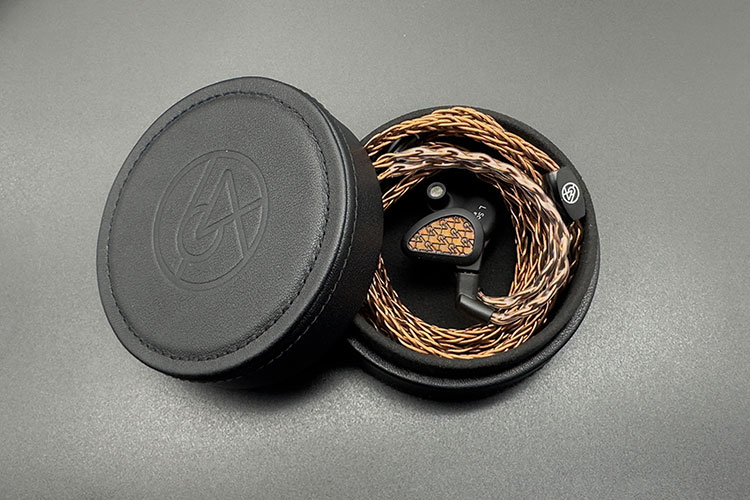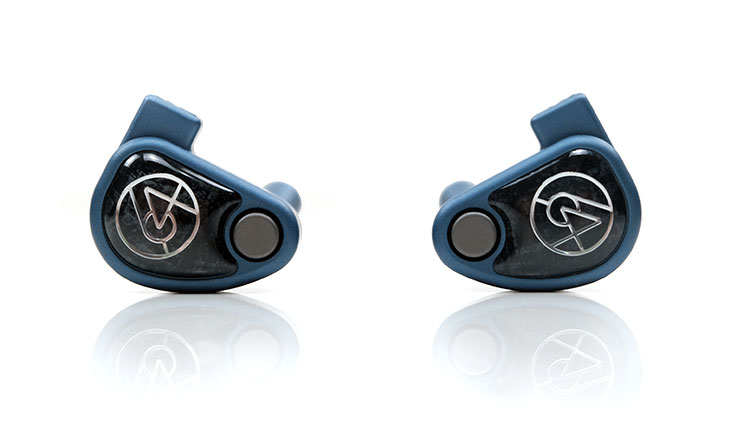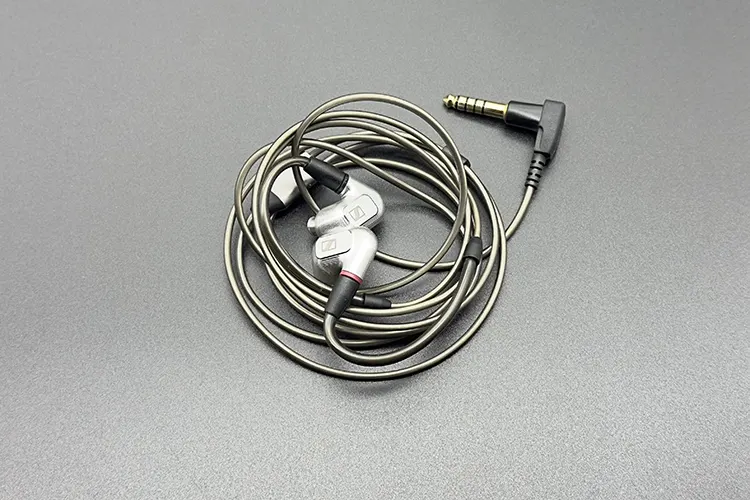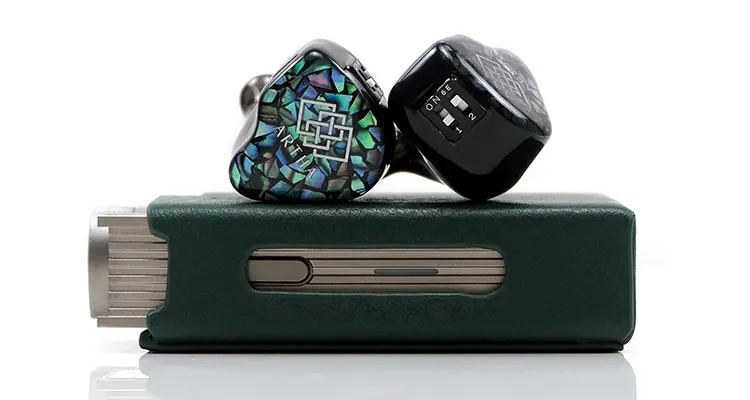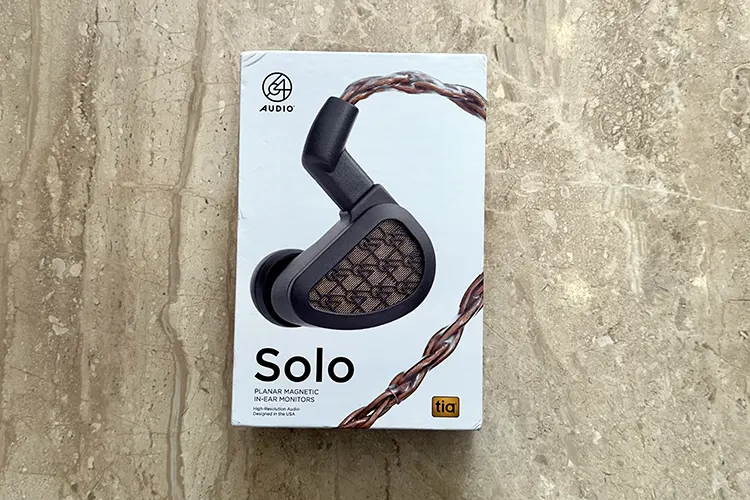Synergy
Efficiency
The Solo has an impedance of 16Ω @ 1 kHz and a sensitivity rating of 100 dB/Vrms. Driving the IEM is not very challenging, but a good, powerful source is a must for it to sound optimum.
With low power sources, the Solo does not sound full and can feel a bit thin and sharp.
With good power, the sound is more spacious with better instrument separation. Solo scales quite well with source; the better you throw at it; it sounds all the more enjoyable.
Source Pairings
Alongside my regulars, the Lotoo Paw Gold Touch (LPGT) and Astell&Kern SP3000, I paired the Solo with the Questyle CMA18 Master. The CMA18M is far too powerful to be paired with an IEM; however, the results are very satisfying.
The LPGT drives the Solo with ease. With a decent amount of power, the Solo reveals its true character, delivering a very open sound with authoritative bass.
The midrange is detailed, and the notes carry sufficient weight. The upper midrange to the treble region is smooth, though there are occasional instances of sharpness.
On the Questyle CMA18P, a DAC/Amp featuring an AKM 4493 DAC chipset, I didn’t enjoy the pairing as much, as the upper frequencies became overly sharp.
Although the device provides significantly more power than the LPGT and opens up the sound, the sharp, fatiguing treble detracts from the experience.
I was initially skeptical about whether the SP3000 could drive the Solo properly, but to my surprise, it pairs exceptionally well. The soundstage becomes more expansive, with increased width.
The bass has better texture and body compared to the LPGT. The midrange is highly resolving with sufficient warmth, while the upper midrange and treble region are smooth, with almost no instances of sharpness.
The CMA18M made me realize that the Solo is truly built to pair with desktop sources. Despite the occasional sharpness in the treble, the CMA18M significantly enhances the Solo’s sound quality, outperforming portable sources.
The bass is abundant, capable of satisfying even bassheads. The midrange remains clean, highly resolving, and detailed, bringing out micro-details quite well.
The DAC section of the CMA18M is not as detailed as the SP3000. I do miss the warmth that the SP3000 offers. The soundstage gains substantial width, becoming very spacious and extending in all directions.
Select Comparisons
64 Audio U4S
Technical
The 64 Audio U4s is a hybrid quad-driver universal IEM with three different types of drivers: a single 9mm dynamic driver for the lows, a balanced armature driver for the low-mids, another for the mid-highs, and 64 Audio’s patented tubeless Tia driver for the highs.
The U4S features a 4-way passive crossover along with an electric low-pass filter for lowering distortion. Additionally, the U4S integrates the Linear Impedance Design (LID) found in the Solo as well, ensuring consistent and reliable sound quality across various sources.
The U4s has an impedance rating of 11Ω @ 1 kHz and an SPL of 107 dB/mW @ 1 kHz @ 1 mW (94 mV). It demands a bit less power than the Solo. It can be driven easily even with a less powerful source, such as smartphones and dongles.
Design
The U4S shares a similar build and size with many other 64 Audio IEMs, featuring anodized aluminum shells. The shells boast a sleek slate blue matte finish and display the brand’s logo on the faceplate. The U4S has a smoother finish to the shells than the Solo.
The Solo has a size similar to the U4S and feels a bit lighter. The nozzles on both of these IEMs are long. When it comes to fit, I find that both IEMs offer a comfortable experience, making them suitable for extended wear.
The Solo offers a more premium packaging experience. The stock cable on the U4S is a 4-wire 26AWG silver-plated OCC copper cable. The stock cable on Solo has a better build and looks. The inclusion of an extra cable on Solo is a nice touch.
Additionally, the U4S is bundled with four different APEX modules: M20, M15, M12, and MX modules, which offer versatility in sound signature.
Performance
The U4S delivers a distinct 64 Audio house sound, reminiscent of models like the U12T and Fourté, though the Solo provides a different flavor with a unique sound signature. For this comparison, I used the M12 gold module on the U4S.
Both IEMs deliver impactful bass, but the U4S excels in texture, layering, and a cleaner decay. The Solo’s bass is warm and thick, with noticeable midbass bloom, while the U4S offers better control, definition, and faster decay. While the Solo provides more bass quantity, I prefer the overall quality of the U4S’s bass.
In the midrange, the U4S is very neutral, with no interference from the bass, providing excellent clarity.
The Solo offers a similar experience, but I prefer the U4S’s lower midrange, which feels slightly lusher. Both have nicely extended, energetic upper midranges, though the U4S takes a smoother approach.
The U4S’s Tia driver delivers detailed, crisp treble without any sharpness or sibilance, making it highly enjoyable. The Solo isn’t far behind, but its planar driver introduces a slight metallic timbre, which can detract from the experience. The U4S feels more refined and appealing in this area.
In terms of technical performance, the Solo edges ahead in depth, vertical stage height, and resolution. Its soundstage feels more holographic and immersive, while the U4S can seem flatter by comparison.
However, both excel in imaging and instrument layering, with the Solo performing slightly better on complex tracks.
While the Solo’s vibrant bass and scalability on powerful sources make it highly enjoyable, the U4S stands out with its refined, balanced sound.
Both are excellent options, and I genuinely enjoy them for different reasons. Ultimately, I find it hard to choose a clear favorite between these two impressive IEMs.
Sennheiser IE900
Technical
Sennheiser IE 900 is a TrueResponse 7mm single dynamic driver IEM. The IEM houses three Helmholtz resonators, which, like the Solo, majorly determine how the treble is tuned.
The IE 900 has an impedance rating of 18Ω @ 1 kHz and an SPL of 94 dB @ 1 kHz. It demands a bit less power than the Solo. It can be comfortably paired with low-powered devices. On the SP3000, I was comfortable at a volume level below 50, while the Solo takes a volume level near 60.
Design
The IE 900 is a shockingly compact IEM, crafted from aluminum using a five-axis CNC machine, precision-cut from a single block. Its size is ideal for various ear types. However, due to its smaller size and narrow nozzle, it can be challenging to achieve the best fit unless you try a good number of ear tips.
The ear tips also play a crucial role in keeping the shells securely in the ear. While fitting the Solo is not challenging, the IE 900 offers unparalleled comfort, provided it fits properly.
Although the IE 900 comes with plenty of accessories, the Solo offers a more well-thought-out and usable set.
The IE 900 includes three stock cables with 2.5mm, 3.5mm, and 4.4mm terminations. I prefer the cable on the Solo, as the IE 900 cable has significant cable noise. The ear tip selection on the Solo is of better quality.
Performance
The IE 900 has a U-shaped sound signature, leaning more toward a musical presentation than an analytical one. Both IEMs share many similarities.
The bass on the IE 900 is highly regarded, and in terms of quality, I would place it a level above the Solo’s bass. The IE 900 offers a well-defined sub-bass focus with excellent depth and body, which the Solo noticeably lacks.
In the mid-bass region, while the Solo delivers more quantity, the IE 900’s control and roundedness give it a more realistic character. To be fair, while the IE 900’s bass has better definition, the Solo’s bass is not far behind.
In the midrange, both the IE 900 and the Solo maintain a neutral character, but the Solo has a more natural feel with added warmth. When compared closely, the Solo’s vocals stand out more, being positioned closer to the listener and feeling slightly taller. In contrast, the IE 900’s vocals are less prominent and a bit recessed.
In the treble region, both IEMs offer a similar level of detailing and extension. The IE 900 occasionally feels slightly splashier, while the Solo exhibits a metallic timbre at times.
Both have ample air and sparkle, with no exaggerated treble peaks. I find the Solo’s treble just a touch more detailed overall.
The Solo delivers a more holographic soundstage with better depth and similar width compared to the IE 900. The IE 900 stage feels slightly flat in comparison.
Thanks to its presentation, which is more spacious, the Solo allows better layering of instruments and breathes in places where there is more room. It also edges ahead in resolution, which means it brings more precision and a sharper sound, which enhances imaging.
Although the IE 900 is not far behind, Solo has a slight edge over it in the technical aspects.
Flipears Artha
Technical
Artha is all-BA IEM with 8 custom Sonion balanced armature drivers. There are two drivers each for sub-bass, bass, midrange, and high frequencies.
It has an impedance of 16Ω and a sensitivity of 118 dB @ 1 mW. It’s easier to drive in comparison to the Solo.
Artha features two tuning switches per side, allowing for four different tuning options, with the 0-1 mode adding a touch of airiness. For the comparison, I am using the 0-1 mode, which adds a bit of airiness in the sound.
Design
Artha employs a Conoid Resonative Chamber (CRC) nozzle design, crafted to elevate sound quality but may be challenging to fit for some users due to its unique shape.
Visually, Artha’s multi-colored and shiny abstract faceplate. I find the design on both the IEMs very appealing, even though they are very different.
Both IEMs use 0.78mm 2-pin connectors. The stock cable on Artha has a better build and finish, though I do not find it very premium either.
Flipears provides a solid accessory set with the Artha, including in-house ear tips and Eletech Baroque tips, along with a premium rectangular leather case. In comparison, Solo offers elegant packaging too, with thoughtful accessory inclusions.
Performance
Artha and Solo have very different tunings. While both IEMs take a musical approach without being overly analytical, Artha leans more towards musicality.
Both IEMs offer plenty of bass, but Artha’s bass can bleed into the midrange, overshadowing nuances. On bass-heavy modes, this intrusion becomes more noticeable.
Solo, on the other hand, has more controlled bass, while Artha provides more warmth and lingering bass. The impact is more prominent on Artha, with its sub-bass offering greater depth and rumble.
Artha has a very musical midrange with more realistic timbre. Vocals sound more natural and lifelike. Solo, in comparison, lacks the same emotional depth.
However, Solo’s midrange is more detailed and offers a resolution that is higher compared to Artha, whose midrange isn’t clean because of bass shelf bleed and added warmth.
Artha has a fuller midrange with taller notes, though the notes aren’t as crisp, and the trails can feel slightly thin. Moving to the upper midrange, both IEMs show decent energy and extension. Artha’s upper midrange is smoother, while Solo’s profile is thinner and sharper.
In the treble, Artha is more relaxed and smoother. Solo has a decent treble profile but can verge into sharpness with some sources. Both IEMs provide a good sense of airiness, though Solo’s treble carries more energy and portrays details better.
Artha offers better depth in the soundstage, while the width is comparable to Solo. This greater depth enhances the sense of layering and gives instruments better positioning on the stage.
However, Solo exhibits slightly better resolution, resulting in an overall clearer picture. While Solo doesn’t lag much, it falls behind in midrange density and warmth, which makes Artha sound richer and more musical.
My Verdict
The planar market is a bit polarized with offerings at extreme ends – there are budget options, and then there are premium models like the Solo.
Honestly, when I first started exploring the Solo, I wasn’t expecting much from it. Initially, it didn’t leave a strong impression and made me question its positioning. However, pairing it with various sources, especially the more powerful ones, is where I discovered just how capable this IEM is.
The closest 64 Audio competition for the Solo is the U4S, which has been highly regarded by the community. I’m glad to report that the Solo excels in several areas, especially with its more authoritative bass, which adds to the fun factor and its ability to scale up impressively with better sources.
Once paired with a good desktop source, there’s no going back, so choose wisely. It’s worth mentioning, however, that the treble can be a bit problematic, and a slight metallic timbre may become noticeable with certain sources.
Overall, I thoroughly enjoyed my time with the 64 Audio Solo and can see myself reaching for it often in the near future.
64 Audio Solo Specifications
- Driver Configuration: 14.2 mm Planar Magnetic
- Impedance: 16Ω @ 1kHz
- Sensitivity: 100dB @ 1kHz
- Frequency Response: 20 Hz – 20 kHz
- Isolation: -12 dB
- Cable: OCC Copper 25 AWG + 23 Wires

